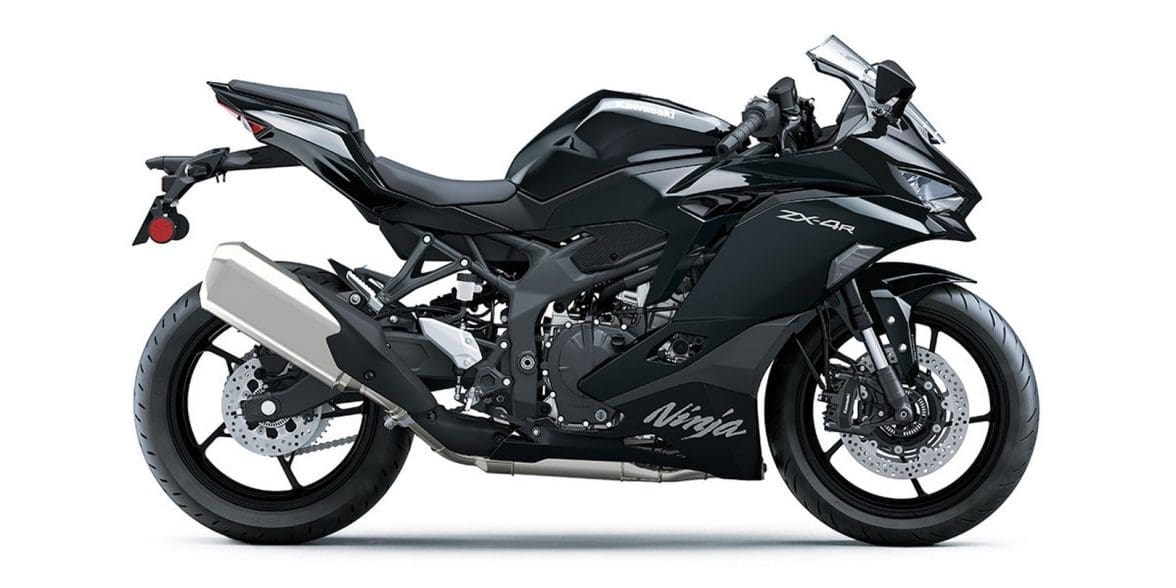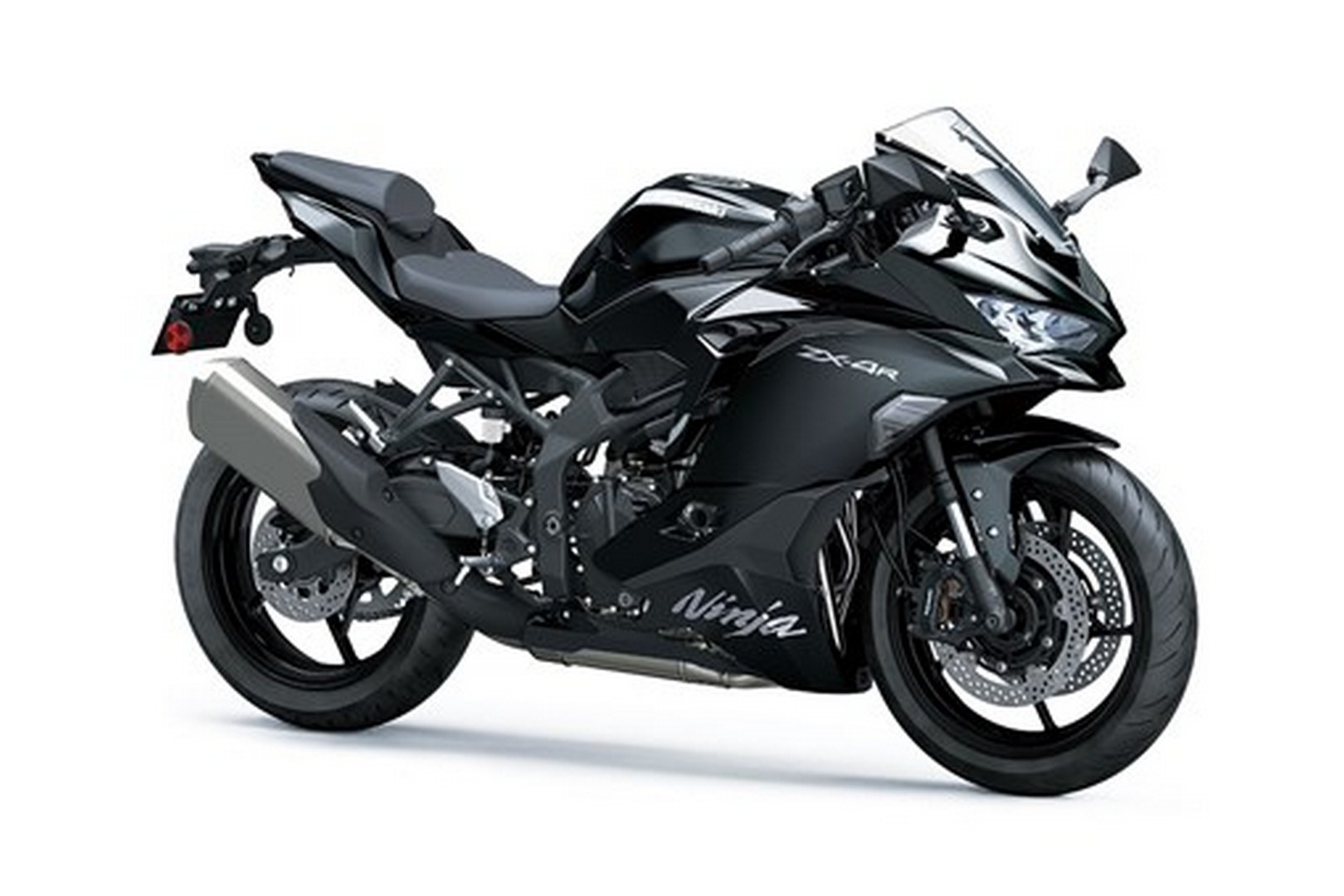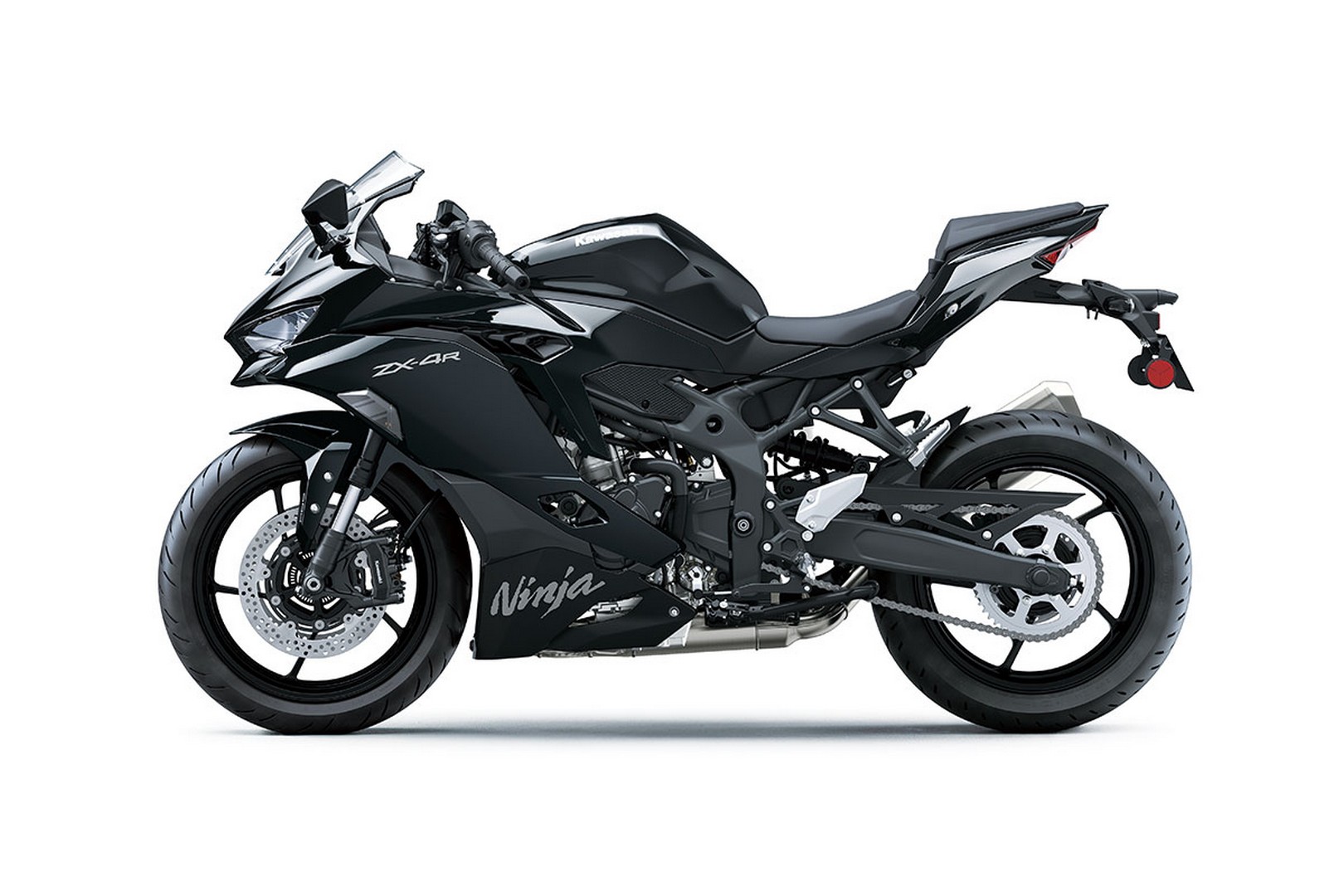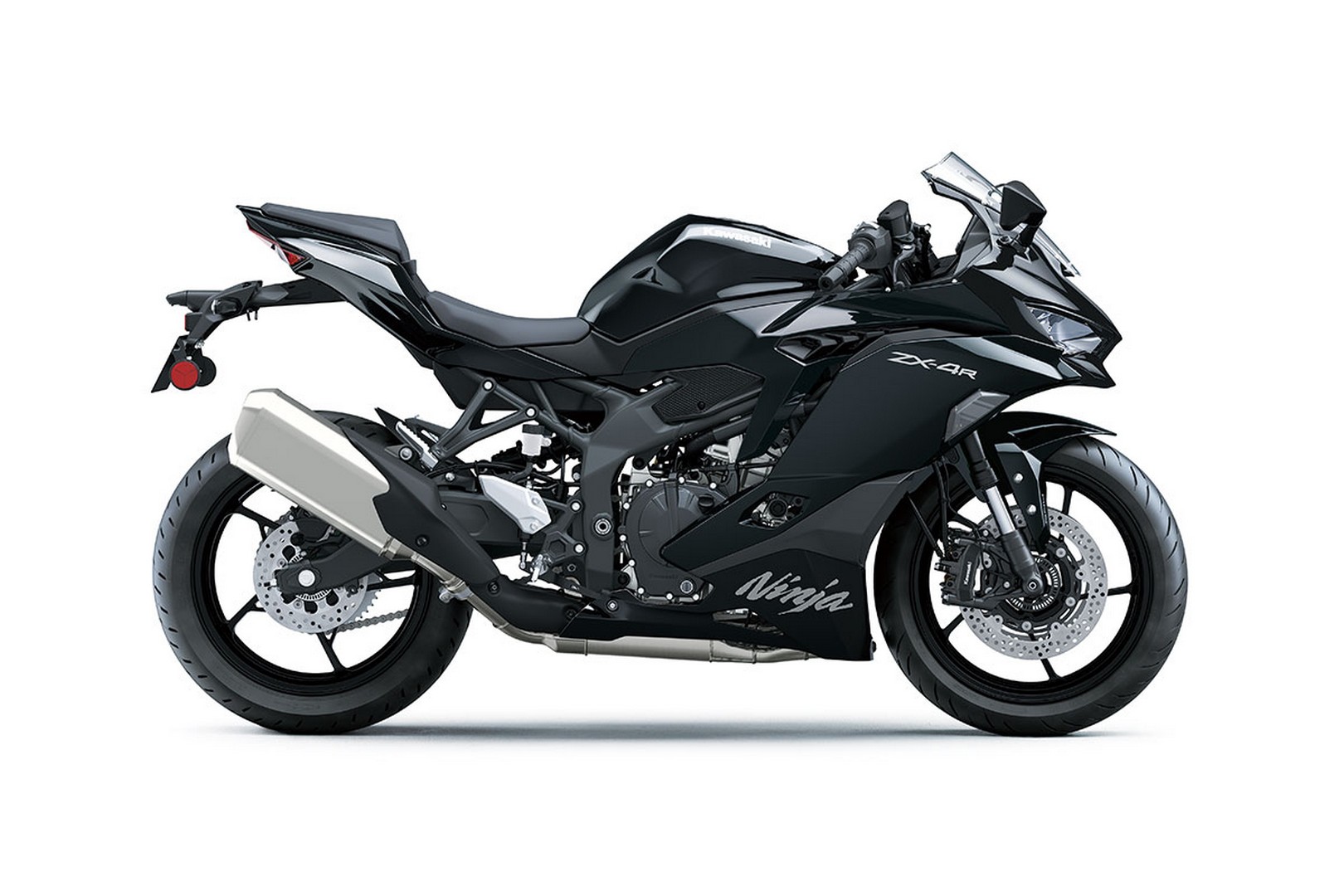The 2023 Kawasaki Ninja ZX-4R: A Middleweight Powerhouse
Contents
Kawasaki motorcycles has once again upped the ante in the supersport segment with the release of the 2023 Ninja ZX-4R but sadly it won’t be available in the USA. This middleweight sportbike is a force to be reckoned with on both the street and the track that’s sure to please seasoned riders and newcomers alike. The ZX-4R continues the aggressive look that is evident throughout Kawasaki’s 2023 Ninja line . Its sharp, aerodynamic lines coupled with the central ram air give it an imposing presence that distinguishes it from its Japanese motorcycle competitors in the middleweight class.
Kawasaki has equipped the Ninja with a powerful 399cc inline-four engine that’s high-revving nature, while the Assist & Slipper Clutch ensures smooth downshifts and reduced rear-wheel hop.
The ZX-4R boasts a lightweight twin-spar aluminum frame that offers exceptional rigidity and handling. The fully adjustable Showa SFF-BP front fork and horizontally mounted rear shock provide precise, responsive suspension action, allowing riders to tailor the bike’s performance to their preferred riding style.
Kawasaki has outfitted the 2023 Ninja ZX-4R with a comprehensive suite of advanced electronics to enhance rider confidence and control. The bike features a quick-shifter for seamless upshifts, selectable engine modes, and traction control to optimize performance across varying road conditions. The bike also comes with a full-color TFT instrument panel that displays vital information and enables smartphone connectivity for seamless integration with Kawasaki’s Rideology app.
The Ninja ZX-4R’s braking system features Nissin radial-mount monobloc front calipers and a single-piston rear caliper, delivering powerful, precise stopping power. The bike rides on high-performance Bridgestone Battlax Hypersport S22 tires that offer superb grip and stability, further enhancing the riding experience.
The 2023 Kawasaki Ninja ZX-4R starts at NA USD/ $9,999 CAD
On this page: we’ve curated specs, features, news, photos/videos, etc. so you can read up on the new 2023 Kawasaki Ninja ZX-4R in one place.
Model Overview
General Info
- Price: NA USD/ $10,999 CAD
- Key Features:
-
- Assist & Slipper Clutch
- Electronics package
- TFT instrument panel
- Dual radial-mount front calipers
Main Specs
- Engine: 399cc, liquid-cooled, 4-stroke, DOHC 16-valve in-line four
- Power: 75 horsepower (estimated)
- Torque: 26.5 lb-ft
- Weight: 414 lbs (188 kgs)
- Seat Height: 31.5 inches (800 mm)
Competitors
Kawasaki Ninja ZX-4R Specifications
ENGINE |
||
| Engine | 399cc, liquid-cooled, 4-stroke, DOHC 16-valve in-line four | |
| Power | 75 horsepower (estimated) | |
| Bore x Stroke | 57.0 x 39.1 mm | |
| Compression Ratio |
12.3:1
|
|
| Fuel System | Fuel injection: ø34 mm x 4 | |
| Starter | Electric | |
| Lubrication | Forced lubrication, wet sump | |
DRIVETRAIN |
||
| Clutch | Wet multi-disc, manual | |
| Transmission | 6-speed, return | |
| Final Drive | Chain | |
CHASSIS |
||
| Suspension Front | ø37 mm inverted fork (SFF-BP) with top-out springs / 120 mm (4.7 in) | |
| Suspension Rear | Horizontal Back-link, gas-charged shock with spring preload adjustability / 112 mm (4.4 in) | |
| Brakes Front | Dual semi-floating ø290 mm discs with radial-mount, monobloc, opposed 4-piston calipers | |
| Brakes Rear |
ø220 mm disc with single-piston caliper
|
|
| Tires Front | 120/70ZR17M/C (58W) | |
| Tires Rear | 160/60ZR17M/C (69W) | |
| Fuel Tank Capacity | 15 litres | |
| Color | ||
ELECTRICAL |
||
| Ignition | Digital | |
| Spark Plugs | ||
| Headlight | LED | |
| Tail Light | LED | |
DIMENSIONS |
||
| Overall Length | 78.3 in | |
| Overall Width | 30.1 in | |
| Overall Height | 43.7 in | |
| Wheelbase | 1,380 mm (54.3 in) | |
| Ground Clearance | 135 mm (5.3 in) | |
| Seat Height | 800 mm (31.5 in) | |
| Curb Weight | 188 kg (414 lb) | |
WARRANTY |
||
| Warranty | 12 Months | |
| Kawasaki Protection Plus | 12 / 24 / 36 / 48 months | |
Kawasaki Ninja ZX-4R Features
Assist & Slipper Clutch
Under normal operation, the assist cam functions as a self-servo mechanism, pulling the clutch hub and operating plate together to compress the clutch plates. This allows the total clutch spring load to be reduced, resulting in a lighter clutch lever feel when operating the clutch.
When excessive engine braking occurs – as a result of quick downshifts (or an accidental downshift) – the slipper cam comes into play, forcing the clutch hub and operating plate apart. This relieves pressure on the clutch plates to reduce back-torque and helps prevent the rear tire from hopping and skidding. This race-style function is particularly useful when sport or track riding.
Economical Riding Indicator
While effective vehicle speed and engine speed may vary by model, paying attention to conditions that cause the “ECO” mark to appear can help riders improve their fuel efficiency – a handy way to increase cruising range. Further, keeping fuel consumption low also helps minimize negative impact on the environment.
Electronic Throttle Valves
Electronic throttle valves also enable more precise control of electronic engine management systems like S-KTRC and KTRC, and allow the implementation of electronic systems like KLCM, Kawasaki Engine Brake Control, and Electronic Cruise Control.
KTRC (Kawasaki Traction Control)
Less intrusive modes maintain optimum traction during cornering. Designed with sport riding in mind, they facilitate acceleration out of corners by maximizing forward drive from the rear wheel. And because Kawasaki’s sophisticated software bases its dynamic analysis on the chassis’ orientation relative to the track surface (rather than relative to a horizontal plane), it is able to take into account corner camber, gradient, etc., and adapt accordingly.
In the more intrusive modes (and for some models, in any mode), when excessive wheel spin is detected, engine output is reduced to allow grip to be regained, effectively enabling riders to negotiate both short, slippery patches (train tracks or manhole covers) and extended stretches of bad roads (wet pavement, cobblestone, gravel) with confidence.
Power Modes
Smartphone Connectivity
ABS (Anti-lock Brake System)
HORIZONTAL BACK-LINK REAR SUSPENSION
A secondary benefit is that the shock unit is placed far away from exhaust heat. Because it is more difficult for heat from the exhaust system to adversely affect suspension oil and gas pressure, suspension performance is more consistent.
Kawasaki Ninja ZX-4R Photos
Kawasaki Ninja ZX-4R Videos
2023 Kawasaki Ninja ZX-4RR review by Peter Lowe One:
2023 Kawasaki Ninja ZX-4RR Review by MotoBob:
Links
Kawasaki Official Websites





